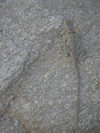SQUAMATA
Scincidae - Skinks are the most diverse group of lizards.
Anguidae - The Anguidae is a large and diverse family of lizards native to the northern hemisphere.
Lacertidae - Lacertidae is the family of the wall lizards, or true lizards, which are native to Europe, Africa, and Asia.
Colubridae - While most colubrids are non-venomous and are normally harmless, a few groups, such as genus Boiga, can produce medically significant bites, while the boomslang and the twig snakes have caused human fatalities.
Boidae - Like the pythons, boids have elongated supratemporal bones.
Gekkonidae - Geckos are small to average sized lizards belonging to the family Gekkonidae, found in warm climates throughout the world.
Viperidae - All viperids have a pair of relatively long solenoglyphous fangs that are used to inject venom from glands located towards the rear of the upper jaws.
Iguanidae - Iguanidae is a family of lizards, composed of iguanas and related species.
Teiidae - Teiidae is a family of lizards native to the Americas, generally known as whiptails.
Dibamidae - Dibamidae is a family of legless lizards found in tropical forests.
Polychrotidae - Anole lizards are frequently and incorrectly called chameleons or geckos, although they are not closely related to either of those groups.
Anniellidae - The family Anniellidae, known as American legless lizards contains two species in a single genus Anniella: A.
Anomochilidae - These two species much resemble those of the family Cylindrophiidae .
Pygopodidae - Pygopodidae is a family of squamates that have reduced or absent limbs and are related to the geckos.
Hydrophiidae - Adults of most species grow to between 120–150 cm in length,
Amphisbaenia - The Amphisbaenia are a usually legless suborder of squamates closely related to lizards and snakes.
Amphisbaenidae - The Amphisbaenidae are a family of amphisbaenians, commonly known as worm lizards.
Bolyeridae - Found in Mauritius.
Chamaeleonidae - The English word chameleon derives from the Latin chamaeleo which is borrowed from the Ancient Greek χαμαιλέων , a compound of χαμαί "on the earth, on the ground" + λέων "lion".
Agamidae - Agamids, lizards of the family Agamidae, include more than 300 species in Africa, Asia, Australia, and a few in Southern Europe.
Phrynosomatidae - Phrynosomatidae is a diverse family of lizards, found from Panama to the extreme south of Canada.
Cordylidae - Girdle-tailed lizards are diurnal and insectivorous.
Crotaphytidae - The family Crotaphytidae, or collared lizards, are desert-dwelling reptiles native to the southwest USA and northern Mexico.
Tropidophiidae - This family is confined to the neotropics, mainly in Hispaniola, Jamaica, and the Cayman Islands with the greatest diversity being in Cuba, where new species are being discovered frequently.
Gerrhosauridae - The Gerrhosauridae is a family of lizards native to Africa and Madagascar.
Helodermatidae - Heloderma, the only genus of the family Helodermatidae, consists of venomous lizards native to the southwestern United States, Mexico and as far south as Guatemala.
Atractaspididae - This family includes many genera formerly classed in other families, on the basis of fang type.
Corytophanidae - Corytophanidae is a family of lizards also called casque head lizards or helmeted lizards.
Tropiduridae - The Tropiduridae is a family of lizards native to South America and the West Indies.
Xantusiidae - Night lizards are a group of very small, viviparous lizards, averaging from less than 4 cm to over 12 cm long.
Leptotyphlopidae - These are relatively small snakes rarely exceeding 30 cm in length; only Leptotyphlops macrolepis and L.
Elapidae - Outwardly, terrestrial elapids look similar to the colubridae: almost all have long and slender bodies with smooth scales, a head that is covered with large shields and not always distinct from the neck, and eyes with round pupils.
Typhlopidae - Found in most tropical and many subtropical regions all over the world, particularly in Africa, Madagascar, Asia, islands in the Pacific, tropical America and in southeastern Europe.
Varanidae - Varanidae is a group of lizards of the superfamily Varanoidea.
Xenosauridae - Despite their apparent similarities, the two genera inhabits widely separated parts of the world, and may not be closely related.



















